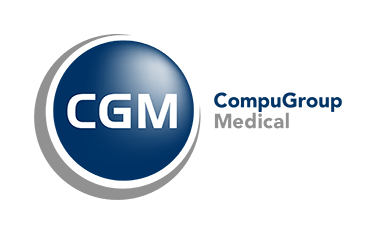EHRs and EMRs (electronic health records and electronic medical records) are the two ways of storing patient health data, and they both have their purposes. The terms are used interchangeably, but they have some peculiar differences in medical terms.
In the healthcare industry, a patient’s medical history is of prime importance as treatment depends largely on medical records. Ailments, diagnoses, medication, and appointments are recorded by healthcare professionals to streamline care coordination of patients.
This record-keeping has been simplified thanks to the digital storage of these records. Doctors and other staff members can access this data to better understand the present condition of any patient and to work effectively toward a better patient outcome.
EMRs (Electronic medical records)
Simply put, EMRs are the digital version of the papers in a medical clinic and hospital. The records are collected by the medical practitioners and contain the medical and treatment history of patients and other critical notes which are used by the providers for diagnosis of diseases and treatment. In comparison to paper records, EMRs serve a greater purpose as they help medical staff with the following:
- Checking which patients are due for preventive visits and screenings
- Tracking data of all the patients over time
- Helping improve the quality of parameters such as blood pressure readings and vaccinations.
EMRs are useful within the vicinity of the clinic and hospital but do not work well outside the practice. An electronic medical record cannot travel out of the practice. Data will have to be printed and mailed to consultants and specialists. In this regard, they are no better than paper records.
EHRs (Electronic health records)
Electronic health records have a vital function in the treatment of a patient as they focus on the health record of the patient beyond the clinical data provided by the EMRs.
EHRs and EMRs contain information found on a paper chart, but an EHR stores a lot more related to the medical history of the patients. An electronic health record for a patient will have data related to the past medical history, critical notes, diagnosis reports, medications assigned by the practitioners, allergies, laboratory test reports, progress notes, immunizations dates, and imaging data. It may also contain data from personal wellness devices, insurance information, and demographic data which can be useful for the patient.
Benefits of EHRs and EMRs:
So, are EHRs and EMRs the same thing? Not exactly.
From the point of patient care and treatment, an EHR is a more powerful tool in coordinating and synchronizing care among facilities and creating a progressive healthcare ecosystem.
- Records are used by healthcare staff to provide quality care and services to patients and to check their overall health improvement
- EHRs are easy to share across practices and health organizations and can be made accessible to authorized providers for better healthcare coordination
- Laboratories, pharmacies, specialists, and imaging units involved in the patient’s care can share EHR data to derive meaningful results
EHRs and EMRs by CompuGroup Medical
The EHRs by CompuGroup Medical are advanced tools that are fast, customizable, and intuitive. An EHR such as CGM APRIMA can help small or large practices to use technology for the enhanced physician-patient experience. Some of the distinctive features of an EHR by CompuGroup Medical are discussed below:
Easy reporting
Quality reporting is one of the important parameters for any EHR solution. A patient’s progress depends a lot on the timely sharing of crucial data so that medical practitioners can take decisions based on history and other parameters. An EHR such as CGM APRIMA uses a MACRA dashboard for real-time reporting of data that the practices can track on the go. The dashboard provides clarity on the individual chart notes and other relevant medical points.
Interoperability
With the changes in our industry, keeping paper trails of data is a thing of the past. Secure, patient-centered information is the key to providing quality care services to patients and to optimizing patient outcomes. This information is expected to be shared securely among practices.
EHR interoperability provides a platform to share information across various channels and ensure it is available in clinical friendly workflows. It further helps in optimizing information management at the clinical level and provides outcome-driven care to patients.
Interactive interfaces
CGM APRIMA EHR and Practice Management is a highly interoperable platform with thousands of interfaces and FHIR-connectivity. The extensive library of customizable templates and ability to tailor workflows means the system is also well-suited to dozens of specialties and includes unique capabilities to accommodate the specialized needs of providers in special settings such as FQHC, home-based primary care, and more.
Are EHRs and EMRs the same thing?
EHRs have extensive uses in the healthcare industry and the customizable features of these tools allow for information sharing across channels.
More than any EMR, these EHR tools can assist clinics and hospitals in providing quality and personalized care to the patients, and this is the crux of the healthcare industry.

